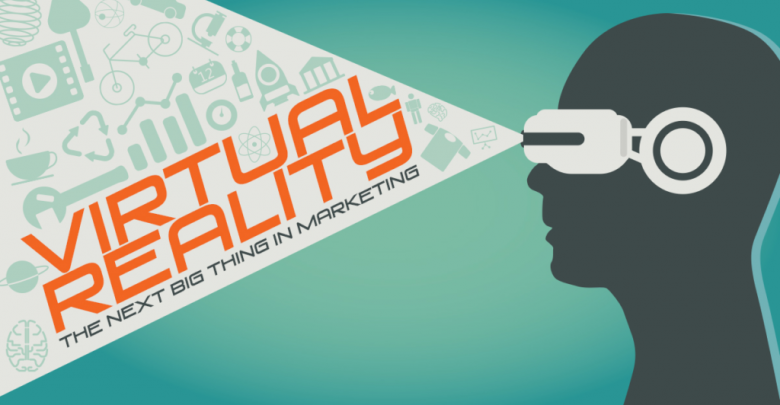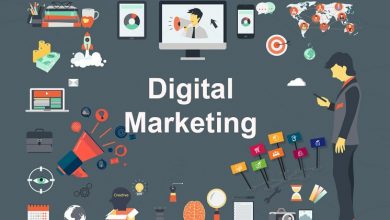
In the digital world where consumers are flooded with commercial messages, there’s a constant need for innovative and creative marketing solutions that will set brands apart from their competitors. Luckily, with new technologies come different ways to attract attention and stand out in the crowd.
So far, AR and VR have proven to be some of the most disruptive forces in the field of marketing. Here are some of the ways you can use them to supercharge your marketing strategy.

Source: Pixabay
Don’t leave anything to the imagination
The popularity of e-commerce and online shopping is constantly on the rise. But even though shopping from the comfort of your home sounds great, it’s not without drawbacks. Take furniture shopping, for example – it can be hard to imagine how your new sofa will look like in your living room.
Fortunately, with the rise of AR and VR technologies, it’s becoming much easier to visualize how the product will look like in your home. Big companies such as IKEA are using this technology to completely revolutionize buying experience by offering a completely personalized and customizable shopping experience. IKEA Place app allows you to virtually place products in your space and IKEA VR Experience enables you to explore their kitchens before purchase.
AR is also becoming increasingly popular in the retail and cosmetic industry. Multiple beauty brands are launching AR beauty tools and teaming up with social media platforms to bring their products closer to the customers. AR mirrors and social media filters allow customers to try out clothes and makeup, and they are being embraced by major companies such as Amazon, L’oreal, and Sephora, because of their convenience and ability to improve consumer experience.
Augmented reality opens the door for a whole new set of marketing opportunities. It can help show exactly how any product will look like on each individual customer, which takes the guesswork out completely and helps consumers make more informed choices.
Build the hype
Did you know that on average, 93 million selfies are posted per day? Companies know that with the help of VR and AR, they can make these numbers working to their advantage. For example, movies and TV shows are teaming up with social media platforms to create highly successful AR marketing campaigns.
From Got’s Night King filter on Snapchat to Netflix teaming up with Snapchat to launch a Stranger Things world lens and Eleven’s signature nosebleed filter to promote the release of the show’s second season, AR campaigns have proven to be highly successful in getting the audience hyped. Integrating social media and AR is a great way to get your followers to create and share some UGC and generate buzz around your brand.
This is not only an effective way to increase brand awareness and improve marketing strategy, but it’s also fairly simple and cheap. Snapchat offers user-friendly tools and templates that make it possible for anyone to create engaging filters and lenses in almost no time.
The price of the filters depends on geofence, a geographic area to which your filter will be applied – the smaller the area, the lower the price. But this doesn’t mean that you need a huge budget in order to make it work. On the contrary, restricting a filter to a small area makes it seem much more exclusive and builds even more hype around your brand.
Gamify the experience
Gamification has been a buzzword on everyone’s lips for quite some time, but it has gotten a whole new meaning with the development of AR and VR technologies.
We all remember Pokémon GO and the summer of 2016. It proved how capturing augmented reality can be and companies didn’t miss the opportunity to hop on this trend. By 2017, over 35,000 stores became sponsored locations, attracting around 500 million visits during this one-year period. The stores offered discounts to the players of this viral AR game and Starbucks even launched a special Pokémon GO Frappuccino.
Last year, Nike teamed up with Wieden + Kennedy Shanghai to create a three-minute Super Mario-style VR game that allows customers to try out Nike’s Epic React shoes on a treadmill in Chinese stores. Customers could create digital avatars and test-run sneakers in the virtual world of Reactland, where they bounced on clouds and encounter frogs and pandas. They could also share this engaging experience on social media.
As we’re constantly bombarded with ads, it can sometimes feel like we’re in that South Park episode about advertising. That’s why it’s important to find new and engaging ways to interact with customers without overwhelming them, and gamification is a great way to raise brand awareness without being too pushy and promotional.
The future of AR and VR
Although AR technology has already become mainstream, VR not quite there yet. With smartphones in their pockets, pretty much anyone with a smartphone can consume AR-infused content with just a simple swipe of the thumb, from the comfort of their homes. On the other hand, VR technology is still not that widespread and not everyone owns a personal VR set. However, it’s still a great marketing strategy for brands, because it can help them attract customers to their stores and increase engagement. The development of these technologies is not likely to stop any time soon and it’ll be interesting to see how will they continue to affect marketing and customer experience.
What do you think the future holds for AR and VR?




